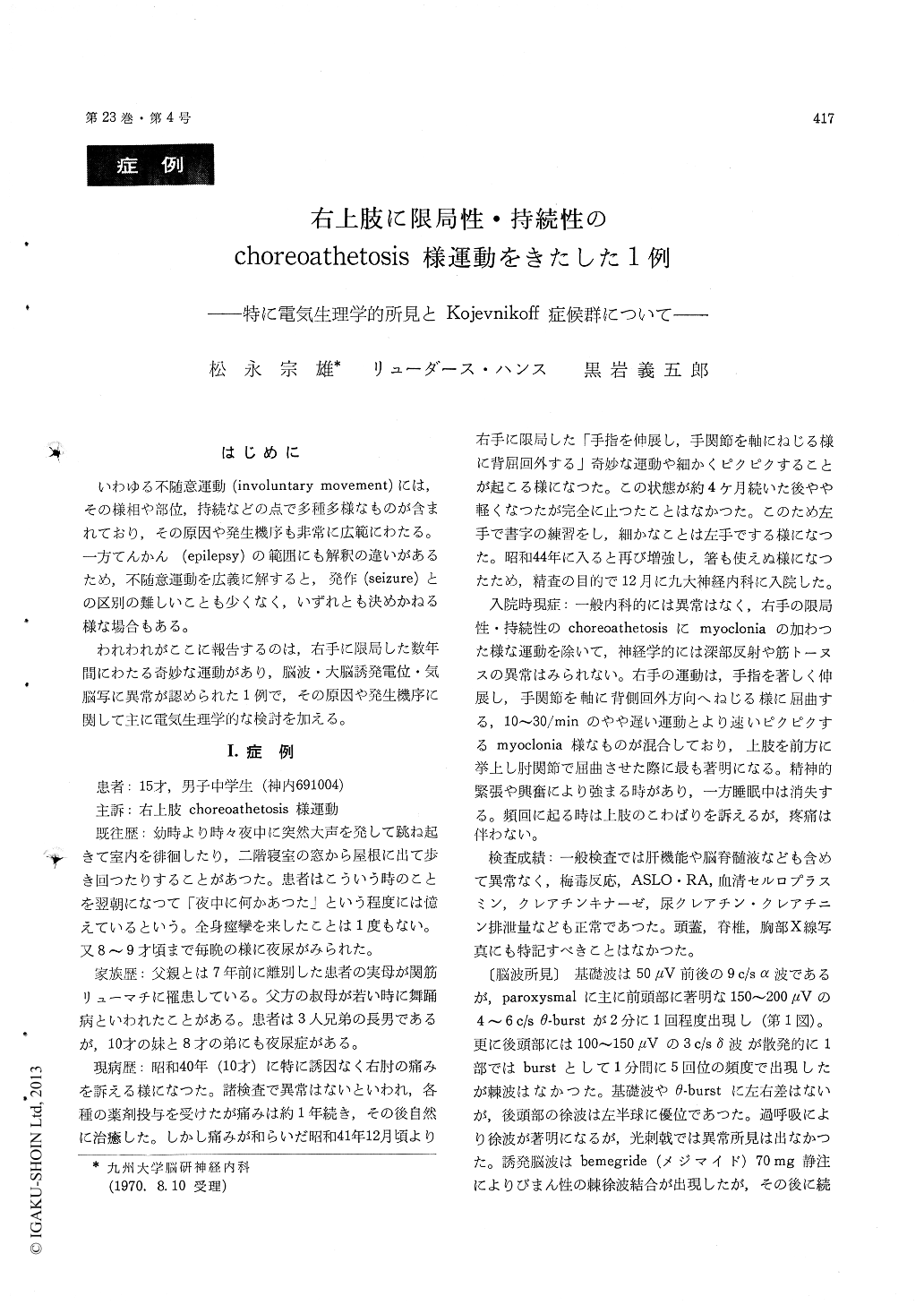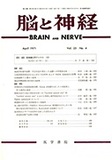Japanese
English
- 有料閲覧
- Abstract 文献概要
- 1ページ目 Look Inside
はじめに
いわゆる不随意運動(involuntary movement)には,その様相や部位,持続などの点で多種多様なものが含まれており,その原因や発生機序も非常に広範にわたる。一方てんかん(epilepsy)の範囲にも解釈の違いがあるため,不随意運動を広義に解すると,発作(seizure)との区別の難しいことも少くなく,いずれとも決めかねる様な場合もある。
われわれがここに報告するのは,右手に限局した数年間にわたる奇妙な運動があり,脳波・大脳誘発電位・気脳写に異常が認められた1例で,その原因や発生機序に関して主に電気生理学的な検討を加える。
A 15-year-old boy with continuous choreoathetotic and partially also myoclonia-like movement localized to the distal portion of the right upper limb was reported.
He had been suffering from this unusual move-ment since more than three years. He was able to suppress the movement during a particular position of the right hand, namely a forced supination and flexion of the right wrist. Nevertheless during exitement or tension, the movement got worse and he was unable to suppress it voluntarily. It was absent during sleep.
Electroencephalogram showed high voltage par-oxysmal theta-bursts prominent in the frontal area and delta-waves dominant to the left occipital area. With bemegride, diffuse spike-and-wave complex could be induced. An abnormal somatosensory evoked potential in the right hand area was re-corded. Pneumoencephalographic examination show-ed that the third ventricle was shifted to the left, and that the left anterior portion of the lateral ventricle was slightly dilated. These findings suggested a deep seated organic lesion in the left hemisphere, especialloy of the left basal ganglia. Diphenylhydantoin (0. 15-0. 2 g/day) reduced his unusual movement of the right hand.
This case supports reported evidences that such an unusal movement is often related with an epi-leptic process, and we are led to classify it nosolo-gically asan extrapyramidal type of Kojevnikoff's syndrome.

Copyright © 1971, Igaku-Shoin Ltd. All rights reserved.


